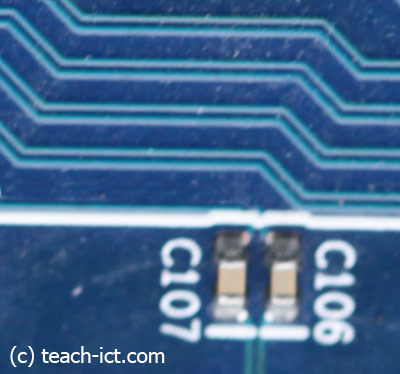Data transmission
3. Parallel transmission
Parallel transmission means a number of bits are transmitted simultaneously and they are all received at the same time.
There still needs to be a single wire for each bit. If all 8 bits of a byte is to be transmitted, then there needs to be 8 separate wires in the cable.

The advantage is that it is faster than serial transmission. However, since 8 wires are needed, it is more expensive and is only practical over short distances.
The other issue is electrical interference, 8 wires right next to each other within a parallel cable causes interference between conductors, unless each one is carefully shielded. And the faster the data transmission the more of a problem it becomes. The practical length of a parallel cable is about 5 metres.
Early printer cables used parallel transmission, however these days USB cables are used as they are plenty fast enough despite being a serial cable.
Parallel transmission is commonly used inside electronic integrated circuits. For example the data and address bus inside a CPU chip is a form of parallel transmission. Digital printed circuit boards such as a computer motherboard will also contain a data bus to carry data from one integrated circuit to another .

The bus consists of a set of parallel copper tracks, with each track carrying one bit.
